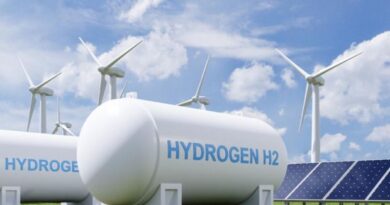Denmark Sets Record With Wind Meeting 47% of its Energy Demands

Denmark got half its power from wind and solar last year in what its grid operator hailed as an important milestone in its hugely ambitious energy transition push. Of the 50 percent, wind alone accounted for 47 percent of Danish electricity demand in 2019, setting a new record.
State-run energy operator Energinet announced its new wind record on Twitter. The renewable energy source now makes up 47 percent of the country’s energy consumption, heating the previous record that was set in 2017 at 43 percent.
Tillykke til Danmark! Vi er halvvejs i den grønne omstilling af energisystemet: I 2019 blev 50% af dansk elforbrug leveret
af vind og sol! Lige over 47% af forbruget kom fra vind – resten fra sol.
Følg med https://t.co/Hz6DUI9jyc https://t.co/jA1FKDpvXC. #dkenergi #2.halvleg pic.twitter.com/7xmQG0vYUo— Energinet (@EnerginetDK) January 2, 2020
The increase in the power provided by wind sources was largely due to the commissioning of the country’s largest offshore wind farm in the North Sea, the 407 MW Horns Rev 3 wind farm complex generates enough energy to power about 425,000 Danish homes. Overall, Denmark’s wind parks produced 16 TWh of electricity in 2019, up from 13.9 TWh in 2018 and 14.8 TWh in 2017.
Denmark – historically a leader in the global wind sector – has recently announced major initiatives in offshore wind and green hydrogen production as it attempts to hit that goal, and push its energy transition into harder-to-decarbonize areas like heating and transport.
Energinet said of the 2019 record: “Once we thought that the power system could handle the maximum of 5 percent of the power being produced as the wind blew and the sun was shining. Fortunately, we have become smarter!”
While 2019 was considered “an average wind year” by Wind Denmark’s CEO Jan Hylleberg, the contribution of new offshore wind capacity is expected to help the country meet 50 percent of its electricity consumption with wind power during 2020 or by 2021. This will happen with the completion of the 600-MW Kriegers Flak offshore project, he added.




